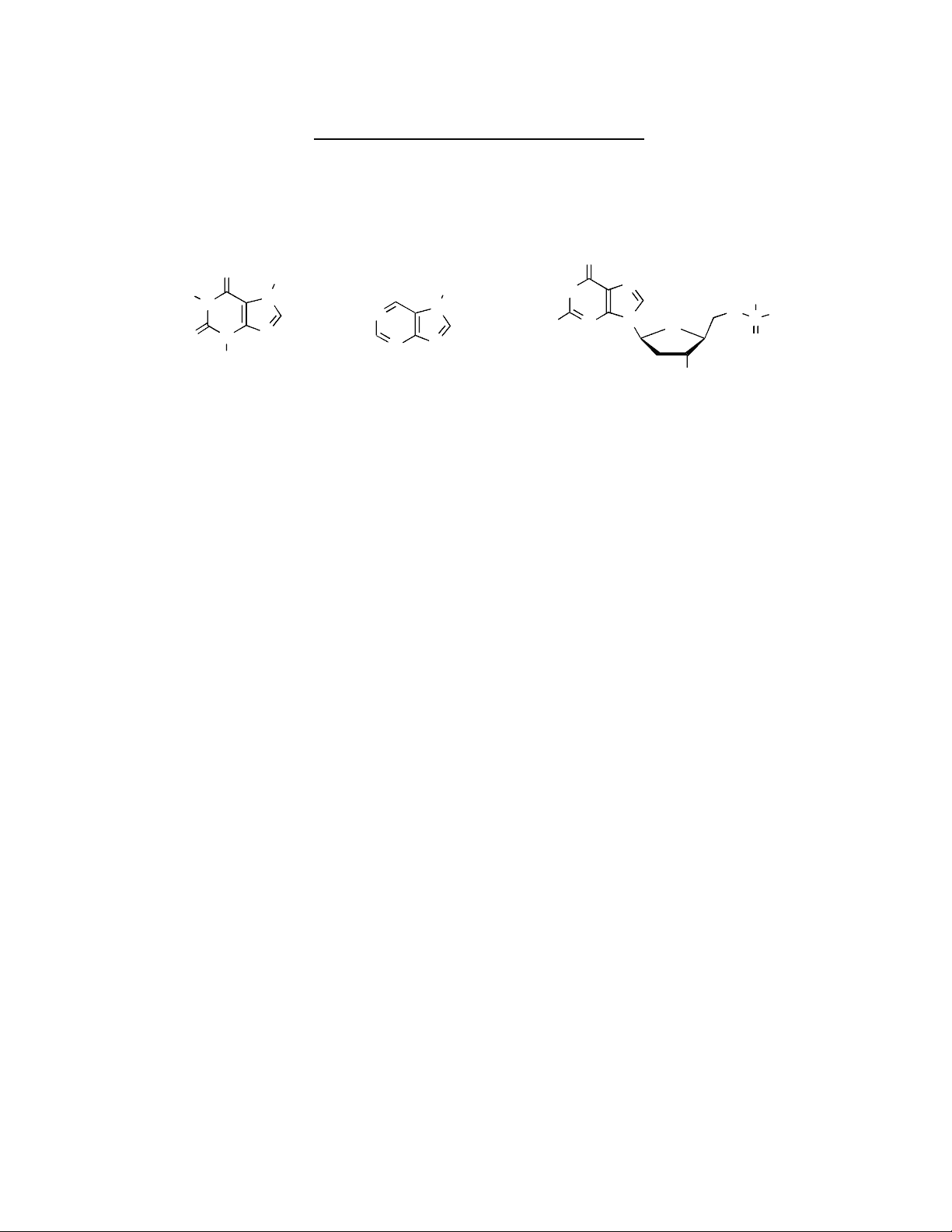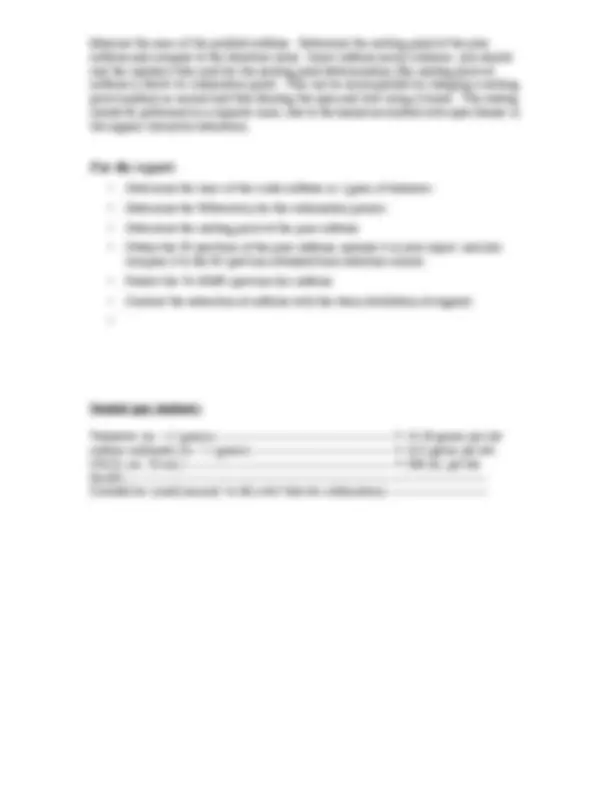



Study with the several resources on Docsity

Earn points by helping other students or get them with a premium plan


Prepare for your exams
Study with the several resources on Docsity

Earn points to download
Earn points by helping other students or get them with a premium plan
Community
Ask the community for help and clear up your study doubts
Discover the best universities in your country according to Docsity users
Free resources
Download our free guides on studying techniques, anxiety management strategies, and thesis advice from Docsity tutors
An experiment conducted at cerritos community college to isolate and characterize caffeine from tealeaves using techniques such as solid-liquid extraction, liquid-liquid extraction, and sublimation. The document also discusses the properties and biological activity of caffeine, a natural product and member of the alkaloid class.
Typology: Study notes
1 / 3

This page cannot be seen from the preview
Don't miss anything!


Cerritos Community College
N N N N O O H 3 C CH 3 H 3 C N N N N H caffeine^ purine O OH N N N HN 2'-deoxyguanosine 5'-phosphate H 2 N O O (^) P OH O O– In this experiment, the techniques of solid-liquid extraction and liquid-liquid extraction will be used to isolate caffeine from tealeaves. A new purification technique, sublimation, will be used to perform the final purification. Caffeine is a member of the class of natural products called alkaloids, which contain nitrogen. Other members of this class include morphine, mescaline, and strychnine. The strong biological activity of these compounds has led to their thorough investigation by many different disciplines. Caffeine possesses the oxidized skeleton of purine, a relative of which can be found as a constituent of DNA (see above). Caffeine is found in many plants with coffee and tea being the most familiar. A cup of coffee or tea provides a 25- to 100 - mg “Dose” of caffeine, which stimulates the central nervous system in a widely exploited manner. From the preceding, it is not surprising that caffeine is soluble in hot water, but it is also soluble in dichloromethane, allowing the following extractive protocol to isolate it. This two-step extractive isolation assures that ionic species remain in the aqueous layer while taking advantage of the swelling that water causes in the tea leaves. Simply extracting the tealeaves with dichloromethane directly is ineffective. The sodium carbonate added to the water during the “steeping” stage is to insure that the caffeine and organic acids are deprotonated. Thus, caffeine will be free to dissolve in dichloromethane while the carboxylate salts will not (see Experiment 3). The caffeine supplied by extraction is fairly pure, but sublimation will further purify the material in a procedure that is effective with the small amounts obtained here.
With care, measure out 1-2 grams of tealeaves. To a 100 ml round bottom flask, mass 1. g of anhydrous sodium carbonate, and then add 10 mL of deionized water. Heat this mixture with the heating mantle to dissolve the sodium carbonate. Add the tea to this solution, in the Erlenmeyer flask. Add a water jacketed condenser standing upright or vertical so that all vapors condense and flow back into the mixture. Heat the mixture to a gentle boil. Maintain constant volume by replacing any water that has escaped as vapor. After 30 minutes of heating, cool the flask to room temperature and transfer the aqueous extracts (after vacuum filtration) to a separatory funnel. Try to pour the liquid onto the funnel before the solid portion which may clog the pores of the filter paper. To assure that
all the aqueous extracts are transferred, rinse the filter paper and the tealeaves in it with about 2 mL of hot water (You should preheat some water). The tealeaves may be disposed of, at this point. Add 2.0 mL of dichloromethane to the extracts and swirl to mix. A bad emulsion may form, but this can be broken up using a stirring rod. Otherwise, transfer the emulsion to a 12-mL centrifuge tube (make sure that it is glass not plastic), and then briefly centrifuge. A clear and colorless dichloromethane layer will have separated from the dark aqueous layer. Carefully remove the lower dichloromethane layer using a long disposable pipette. Repeat the dichloromethane extraction process 4 more times, and collect the organic layers in a tared small Erlenmeyer flask. Dry the wet dichloromethane extracts with anhydrous sodium sulfate and collect the dried solutions in a 25-mL Erlenmeyer flask, using a pipette filter (a Pasteur pipette plugged with a cotton plug). After passing all the dried solution, take a fresh 2 mL portion of methylene chloride, and rinse the remaining sodium sulfate in the original Erlenmeyer flask to assure the complete transfer of all the caffeine. In a fume hood, add a tared boiling stone or magnetic stir bar to the combined dichloromethane extracts and rinsing and heat on the hot plate/stirrer until dry to give an off-white crystalline solid (the crude caffeine). Measure the mass of the crude caffeine you just obtained. The crude caffeine is further purified by sublimation using an apparatus constructed from a flared test tube fitted with an O-ring and a heavy walled test tube with side arm. The sublimation apparatus pieces will be available in the lab. Transfer the crude caffeine to the heavy walled test tube. Close with the flared test tube and attach to an aspirator with an intervening vented water trap. Apply vacuum to the apparatus for 1 minute to remove any volatiles before filling the flared test tube with a small amount of crushed ice. Gently heat the heavy walled test tube with a burner taking care to move the flame continuously and not to melt the solids. If melting does occur, remove the flame for several seconds until it solidifies again. Continue heating carefully. Discontinue heating when no more caffeine is observed to sublime. Allow the apparatus to cool under vacuum for 1 minute, open vent on trap to release the vacuum, and then carefully detach the sublimation apparatus to avoid knocking the sublimed caffeine from the chilled condenser. Scrape the caffeine from the condenser with a spatula onto weighing paper.